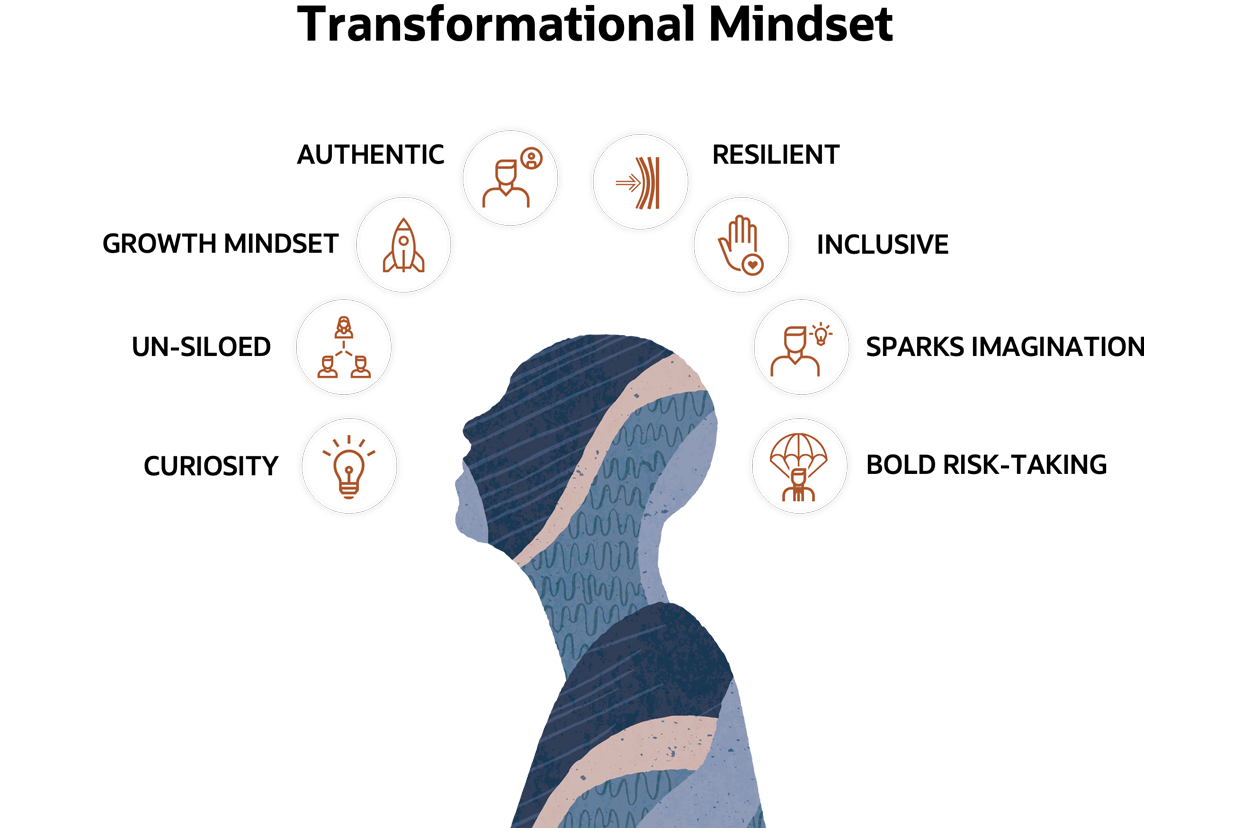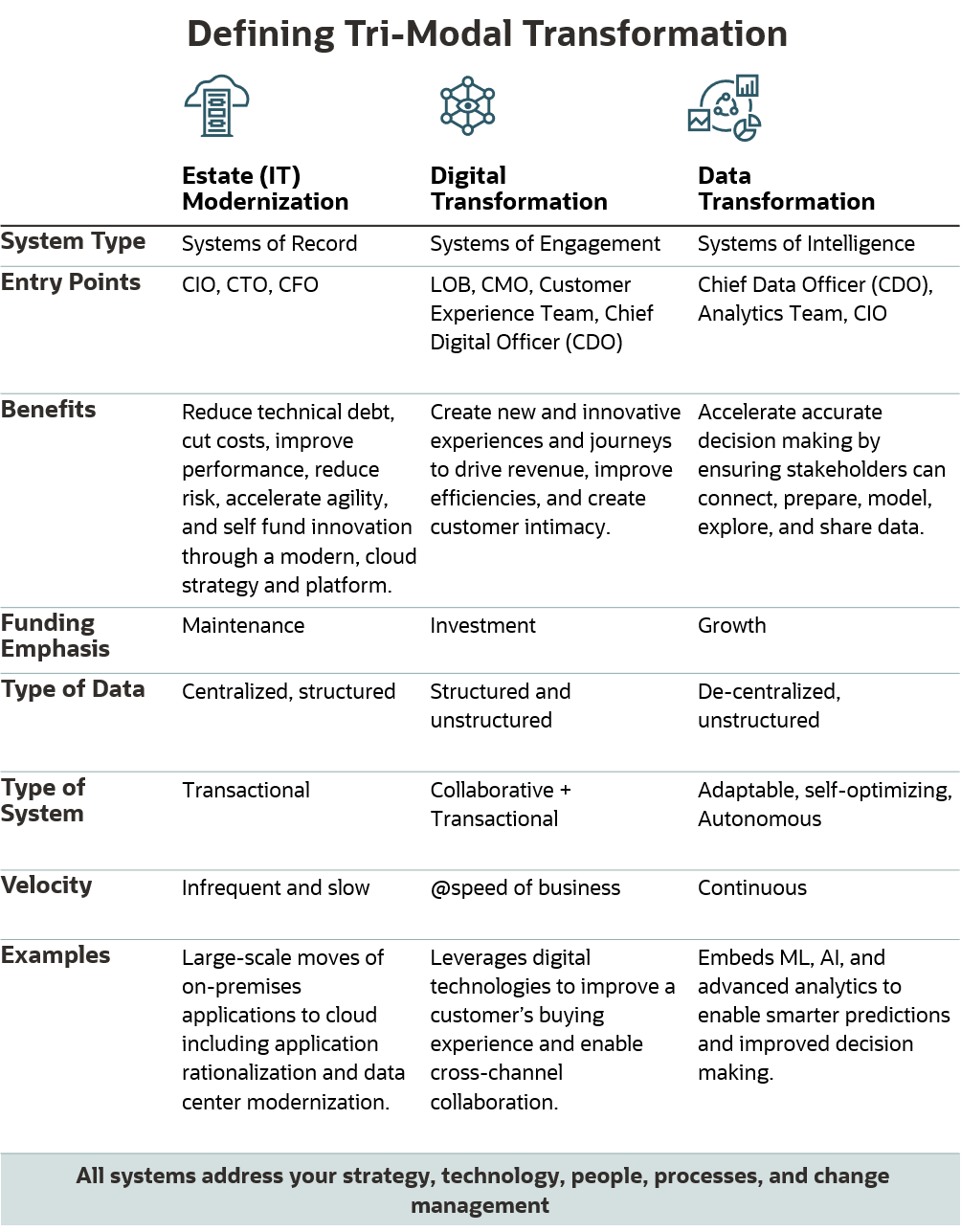Practicing yoga has taught me that, when amidst chaos and turbulence, the inclination is to get swept up. But the unintuitive and intentional best action is to pause and take a deep breath. While the past year has brought extraordinary challenges, it has also opened doors to tremendous growth and opportunity.
The lines between our personal and professional lives have blurred, but the people thriving seem to have something in common: A transformational mindset. In 2021, the transformational mindset has shifted to a more holistic, expansive, and kinder view of leadership.

A transformational mindset
With this shift in mindset, technology strategy becomes a critical enabler. We can look at technology transformation through a new set of lenses, using a tri-modal approach to enable your company to thrive in today’s fluctuating business environment.
You’ve probably heard of Gartner’s bi-modal approach, which states that tension exists between your systems of record and systems of engagement. A system of record is a single source of truth that’s historically legacy and are hard to change, and systems of engagement are applications that are more customer-centric and easier to change.
The pandemic has exacerbated the need to focus on predictability through modernization of your systems of record, while ensuring that innovation is embedded into your systems of engagement and while determining a philosophical approach to cloud without disrupting the business. Amid this already-challenging struggle for stakeholders across business and technology looms the untapped potential of artificial intelligence and machine learning, or systems of intelligence. This third system transforms the need for bi-modal IT into tri-modal IT.

The tri-modal IT approach raises the value of all three systems, so you aren’t making prioritization or budget decisions within silos. Our approach refocuses most of your spending and focus on a technology strategy that benefits all three systems. While you might enter the conversation through one lens, the resulting activities become integrated, benefitting the other systems. A logistics company working on getting smarter with predictive AI might come through the lens of Data Transformation, and a retailer accelerating to a weightless transaction model might be driven through the lens of Digital Transformation.
The holistic approach with tri-modal helps build consensus and collaboration across the stakeholders who might have a natural orientation toward only one of the systems.

How Oracle helps with the tri-modal approach
At Oracle, we’ve seen that employees, businesses, and partners who embrace the tri-modal approach as a framework have been able to quickly adapt to changes from the pandemic. By establishing a modern, customer-centric, digital environment oriented around value, our clients typically see both a benefit to challenged budgets and a more expansive view of business growth, enabling bottom- and top-line impact.
We invite you to explore the tri-modal approach through our Designed for Change webinar series with the following videos:

Digital Transformation in a Post Pandemic World
IT Modernization: Laying the Foundation for Your Future
Data Transformation: Unlocking the Power of Your Information
Want to know more?
And why not learn more among friends? We offer a zero-cost strategic workshop, called Hello. We can help you expand your horizons, plan your digital future, and provide practical recommendations for your ever-evolving cloud strategy. To reserve your spot, email us!
Transforming in today’s pandemic business environment requires a little more fun, a lot more curiosity, and a new approach to technology strategy. So, I invite you to pause, take a deep breath, and together let’s reframe transformation.
